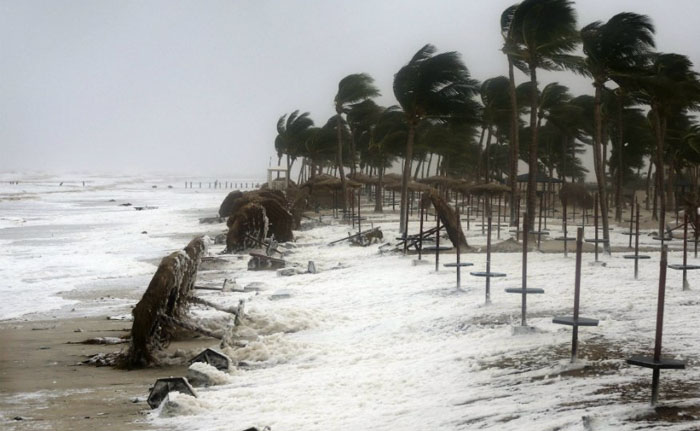Cyclone Amphan: On Tuesday, Home Minister Amit Shah spoke to Chief Ministers of Bengal and Odisha on phone.
New Delhi, May 20”
Cyclone Amphan, one of the worst storms over the Bay of Bengal in years, will hit Bengal this afternoon. Amphan weakened from a super cyclone to an “extremely severe cyclonic storm” on Tuesday, causing strong winds and heavy rain in parts of Odisha and Bengal as it advanced towards the Indian coast. More than three lakh people have been evacuated in Bengal. Officials anticipate massive destruction when the cyclone strikes; Amphan is expected to pack winds gusting up to 185 kilometres per hour when it crosses West Bengal’s Digha and Bangladesh’s Hatiya. Amphan is only the second “super cyclone” to form in the northeastern Indian Ocean since records began. Indian Navy is on “high alert” on the east coast for relief efforts, an official statement said.
Here are the top ten developments on Cyclone Amphan:
Early morning visuals showed winds and heavy rain in Paradip in Odisha and South 24 Paraganas in Bengal. Seven districts of Bengal are likely to face the direct impact of the cyclone. Kolkata, which is close to the coast, is also on alert.
Describing the vulnerable areas as “red plus zones”, Chief Minister Mamata Banerjee said she would stay overnight in the control room tonight.
Those living near the coast have been warned against stepping out; fishermen have been warned to stay off coast. Mamata Banerjee said they should stay in from Wednesday morning until an all-clear was sounded on Thursday. “The tail-end of a cyclone can do worst damage, so people should not come out of their homes until they get an all-clear,” she said, recalling that when Cyclone Fani hit last year, more died when the cyclone was leaving.
Three lakh people have been evacuated in Bengal, one lakh have been evacuated to safety in Odisha. On Tuesday, Home Minister Amit Shah spoke to Chief Ministers of Bengal and Odisha – Mamata Banerjee and Naveen Patnaik – on phone, assuring them all help from the central government.
Cyclone Amphan along with the coronavirus fight pose a double challenge for the country, National Disaster Response Force chief SN Pradhan said on Tuesday. “We have told Bengal and Odisha, social distancing has to be maintained strictly in cyclone shelters. If a shelter has space for 1,000, then only 500 should be allowed,” NDRF chief SN Pradhan told NDTV.
Forty teams of the NDRF have been deployed in West Bengal and Odisha to deal with any emergency situation. “A second disaster coming amid COVID-19 pandemic,” Mr Pradhan said on Tuesday and it needs continuous monitoring.
India Meteorological Department director general Mrutyunjay Mohapatra said since the super cyclone is gradually weakening, its impact is unlikely to be severe in Odisha. However, coastal districts like Jagatsinghpur, Kendrapara, Bhadrak and Balasore are likely to be battered by heavy rain coupled with high-speed winds.
In a statement, the Indian Meteorological Department has warned of flying objects, uprooting of electricity poles and boats getting torn away. The department says a storm surge of a height of about four-six metres above the astronomical tide will inundate the low-lying coastal areas in Bengal. The department says a storm surge of a height of about four-six metres above the astronomical tide will inundate the low-lying coastal areas in Bengal.
On Monday, Prime Minister Narendra Modi had chaired a high-level meeting to review the response measures and preparedness to tackle the storm. “Reviewed the preparedness regarding the situation due to cyclone ‘Amphan.’ The response measures as well as evacuation plans were discussed. I pray for everyone’s safety and assure all possible support from the Central Government,” PM Modi tweeted after the meeting.
“Amphan”, pronounced as “Um-pun”, means sky. The name was given by Thailand in 2004, years ago. The storm is being constantly tracked by Doppler Weather Radar at Vishakhapatnam. Odisha, which was praised for its handling of Cyclone Fani last year, had said last week that it was prepared to evacuate over a million people.




